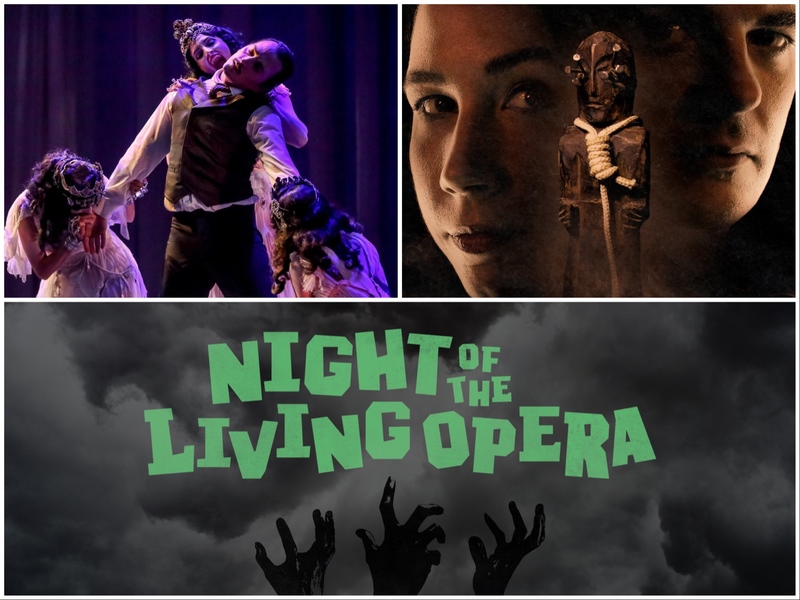Now in his 80s, Stephen Sondheim has been taking victory laps the last few years. His genius is deservedly appreciated, and I doubt I will get any argument by calling him the greatest living composer of musical theater.
With its exquisite production of "Sunday in the Park With George," the Skylight Music Theatre is taking that further. It is showing us that Sondheim belongs in the discussion about America's greatest theatrical writers, along with O'Neill, Williams, Miller, August Wilson and Edward Albee.
"Sunday in the Park" has been recognized as something deeper and more meaningful than most musicals. It was awarded the Pulitzer Prize for drama in 1985. The Skylight production gloriously captures the substance and style.
The show reflects Sondheim's insightful observations about another few pieces of the puzzle of being human. Most of his work examines our fears, flaws and needs, and "Sunday in the Park" does that with poignancy and intensity. Frequent collaborator James Lapine wrote the book, but the big picture as well as the music and lyrics are all from the master.
And what a big picture it is. Sondheim chose to center this musical on "A Sunday Afternoon on the Island of La Grande Jatte," a giant 19th century pointillist painting of middle class Parisians relaxing in a park. (You can see it at the Art Institute of Chicago.) Artist Georges Seurat, who never sold a painting while he was alive, originated the pointillist technique.
Sondheim and Lapine use the unusual work of art as context to comment on the act of creation. Some see a similarity between the exacting French painter and the exacting American composer.
First act scenes concentrate on Seurat sketching the people who will appear in the painting and his working on the mammoth canvas. The musical's characters step in and out of the artist's tableau.
Act I ends with the work being completed, and the story jumps ahead a full century in the second act, as Seurat's great-grandson, also an artist named George, attends a museum reception for his own cutting-edge work.
Plot is not the reason to see "Sunday in the Park." There isn't much of it.
Character development is thin, too. We know precious little about these folks except that they are caught in profoundly human, painfully unavoidable situations. In Sondheim's hands, that is more than enough.
The concept of the genius artist, aloof from society on his observational perch and also removed from the satisfaction of true intimacy, is illustrated here. Make that a trail blazing artist who is also isolated in his profession.
This fictional story gives Seurat a girlfriend, puckishly named Dot, who loves him. But he is obsessively and narrowly driven by his creative vision, and she would like some warmth and attention.
When a dull but adoring baker starts courting her, Dot is faced with a bad choice – lonely love or reliable companionship. She settles for the latter. Real life forces that decision on people every day.
Sondheim expresses these human conditions as if he composed with a scalpel. The score is lovely and evocative, and the lyrics are sharply clever. "Sunday in the Park's" song list includes "Children and Art," "Putting It Together" and "Finishing the Hat."
The Skylight production, under Bill Theisen's precise direction, finds the nuances and subtleties in a show that is sometimes produced without them. Substantial credit for that must be given to Sean Allan Krill and Alison Mary Forbes' portrayals of George and Dot. Each contribute quiet depth and vulnerability while navigating the score with ease.
This is an ensemble piece, and the rest of the cast sparkles with crisp clarity and a firm grasp of the musical's tone. Give special credit to the Skylight scenic artists for turning the Cabot Theatre stage at the Broadway Theater Center into an evening on the island of La Grande Jatte.
Damien has been around so long, he was at Summerfest the night George Carlin was arrested for speaking the seven dirty words you can't say on TV. He was also at the Uptown Theatre the night Bruce Springsteen's first Milwaukee concert was interrupted for three hours by a bomb scare. Damien was reviewing the concert for the Milwaukee Journal. He wrote for the Journal and Journal Sentinel for 37 years, the last 29 as theater critic.
During those years, Damien served two terms on the board of the American Theatre Critics Association, a term on the board of the association's foundation, and he studied the Latinization of American culture in a University of Southern California fellowship program. Damien also hosted his own arts radio program, "Milwaukee Presents with Damien Jaques," on WHAD for eight years.
Travel, books and, not surprisingly, theater top the list of Damien's interests. A news junkie, he is particularly plugged into politics and international affairs, but he also closely follows the Brewers, Packers and Marquette baskeball. Damien lives downtown, within easy walking distance of most of the theaters he attends.







